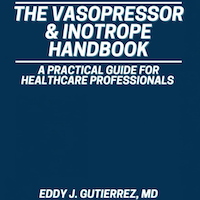Tag: septic shock
Prevalence and Outcomes of Shock in Internal Medicine Patients
This retrospective observational study investigated the incidence, management, and outcomes of 125 shock patients admitted to the internal medicine department of a referral university hospital in Bangkok, Thailand, addressing... read more
Sepsis and Septic Shock: An Issue of Critical Care Clinics
Shock is caused by the decreased flow of blood to the body tissues due to circulatory system related problems. Sepsis refers to a life-threatening condition where the body causes injury to its own organs and tissues in response... read more
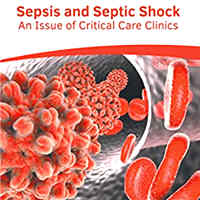
Impact of Esketamine vs. Remifentanil on Hemodynamics and Outcomes in Mechanically Ventilated Septic Shock
This single-center, prospective, randomized, controlled pilot study compared the hemodynamic effects and prognosis of esketamine versus remifentanil, both used in combination with propofol, for sedation and analgesia in patients... read more
Hemolysis in Septic Patients with Acute Respiratory Failure: Prognostic Implications
This study highlights the critical role of hemolysis in sepsis and acute respiratory failure, showing a strong association with organ dysfunction. Hemolysis is notably frequent, especially in patients with septic shock... read more
Aminoglycosides Impact on Survival Rate and Renal Outcomes in Patients with Urosepsis
The addition of aminoglycosides to beta-lactam therapy in critically ill patients with urosepsis did not significantly improve 30-day survival. Furthermore, aminoglycosides were not associated with worse renal outcomes.... read more
Septic Shock Metabolic Subgroups and Clinical Outcome
Three metabolic clusters exist in patients with septic shock with most metabolites differing between clusters and lipid species being most influential. Cluster proportions evolved over time with a high metabolite group... read more
Sepsis: Staging and Potential Future Therapies
Sepsis is a life-threatening organ dysfunction caused by a dysregulated host response to infection. Variability in pathogenesis and complex pathophysiology often delay diagnosis and create significant challenges for clinical... read more
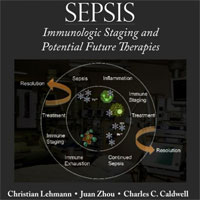
Fluid Management Impact on Outcomes in Sequential Extracorporeal Support
Sepsis is a life-threatening condition characterized by dysregulated inflammatory responses, often leading to multiple organ dysfunction and high mortality rates. Continuous renal replacement therapy (CRRT) and extracorporeal... read more
Leptin and Linterlukin-6 Relationship and Influence of Mortality in Sepsis
High leptin levels might counteract the adverse prognostic effect of elevated IL-6 on septic mortality. At the same IL-6 level, leptin could predict septic mortality. Leptin might be a protecting factor for men and gender-different... read more
Promising Prognostic Predictors in Sepsis Patients Using Lactate and Albumin Ratio
Serum Lactate/Albumin ratio and BAR ratio were significantly higher in sepsis and/or septic shock and associated with increased length of hospital stay and increased in-hospital mortality and poor clinical outcome inside... read more
Successful Clearance of Persistent Staphylococcus Aureus Pneumonia Using High-dose Continuous Infusion Cefazolin
High-dose cefazolin (10 g daily), given as a continuous infusion (CI), was able to clear community-acquired methicillin-susceptible Staphylococcus aureus (MSSA) pneumonia while not exhibiting any signs of toxicity or adverse... read more
Management of Pediatric Septic Shock with Electrocardiometry
Advanced hemodynamic monitoring with EC, in conjunction with clinical assessment, facilitated a restrictive fluid strategy and reduced the incidence of FO. By closely monitoring hemodynamic parameters and tailoring therapy... read more
Reducing Mortality in Critically Ill Patients
This book describes the techniques, strategies, and drugs that have been demonstrated by multicenter randomized trials to influence survival in critically ill patients, defined as those who have acute failure of at least... read more
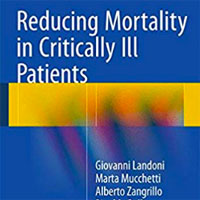
Standard vs. Double Dosing of Beta-lactam Antibiotics in Critically Ill Sepsis Patients
The BULLSEYE trial is a randomized controlled study designed to enhance the treatment of critically ill patients with septic shock. The concept of administering higher and double doses of beta-lactams in such patients... read more
Septic Distributive Shock: Resuscitative Endovascular Balloon Occlusion of the Aorta
Massive distributive shock can lead to total collapse of the cardiopulmonary system with a subsequent need for CPR. Partial REBOA may be a viable resuscitation adjunct in such cases to restore hemodynamics and increase coronary... read more
Mortality Time Frame Variability in Septic Shock Clinical Trials
There was considerable variability in the mortality time frames reported in ICU-based septic shock trials. This variability may lead to under or overestimation of the problem, overlooking the effectiveness of the interventions... read more
Sepsis: Definitions, Pathophysiology and the Challenge of Bedside Management
A comprehensive and state-of-the-art resource for clinicians who care for patients with sepsis and research scientist alike. Patients with severe sepsis requiring ICU admission have very high rates of ICU and overall... read more
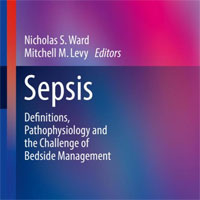
Recent Advances in Severe Sepsis and Septic Shock Management
This review highlights recent advances in the treatment of severe sepsis and septic shock, emphasizing new strategies aimed at improving overall survival and reducing mortality in this patient population. Despite years... read more
Methylprednisolone vs. Hydrocortisone in Septic Shock Patients
Corticosteroids play an important role in the management of septic shock patients, especially in those with higher doses of vasopressor. However, the therapeutic benefits of corticosteroids are not limited to hydrocortisone... read more
Machine Learning Model for Predicting Acute Pancreatitis Mortality in the ICU
Machine learning model has been proved to be superior to existing prediction scores for mortality prediction of Acute Pancreatitis (AP). The use of most of previous ML models is limited in clinical practice, mainly due... read more
Sepsis Management in Resource-limited Settings
This book is open access under a CC BY 4.0 license. It constitutes a unique source of knowledge and guidance for all healthcare workers who care for patients with sepsis and septic shock in resource-limited settings. More... read more
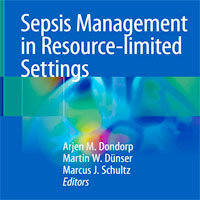
Impact of Short-Acting Beta-Blockers on the Outcomes of Septic Shock Patients
In patients with septic shock, short-acting beta-blockers may improve survival and reduce new-onset tachyarrhythmias. However, these findings were based on low certainty evidence and given ongoing concerns regarding adverse... read more






